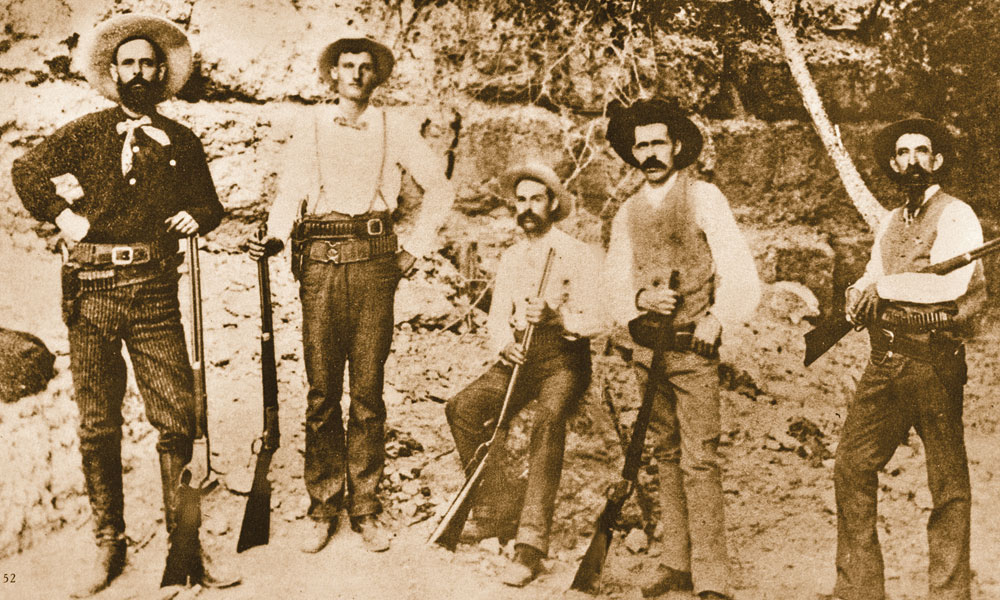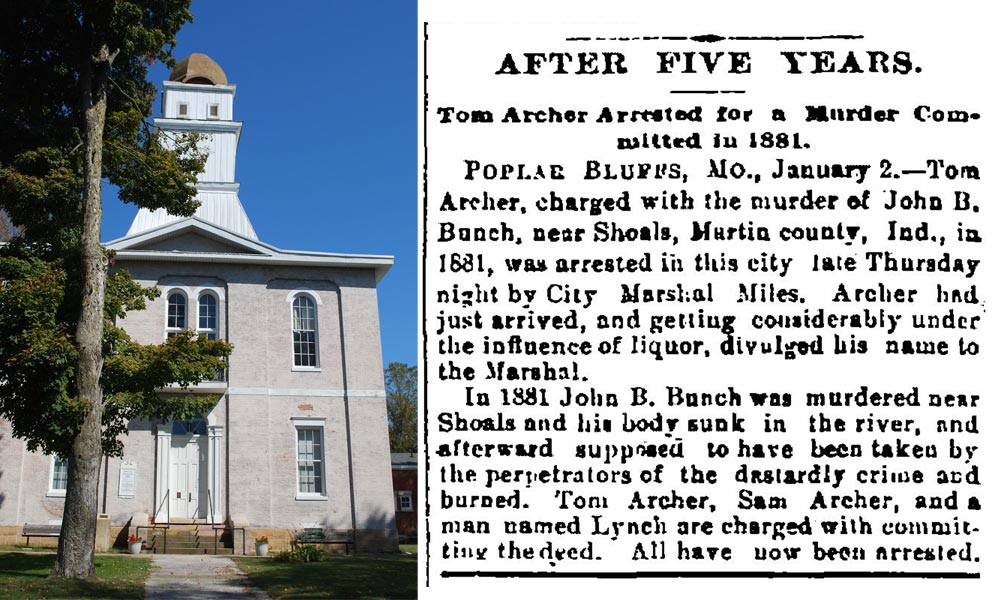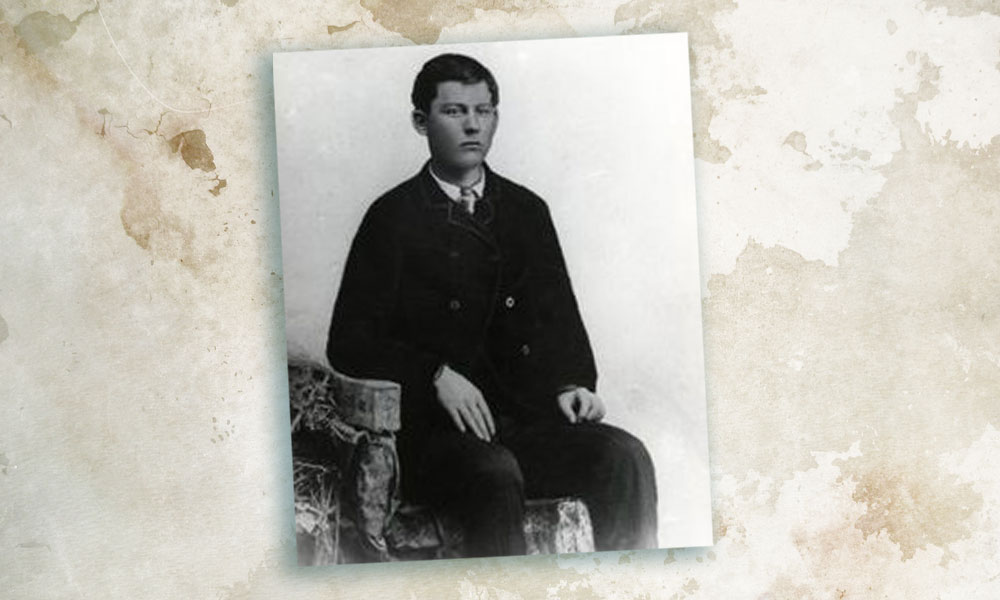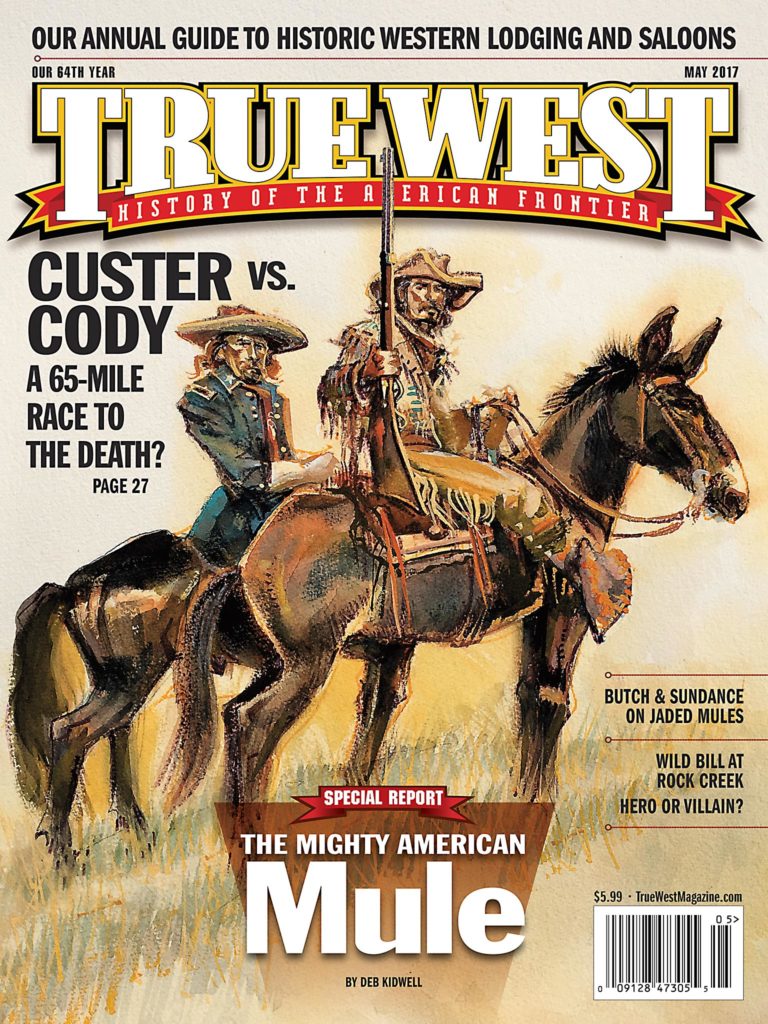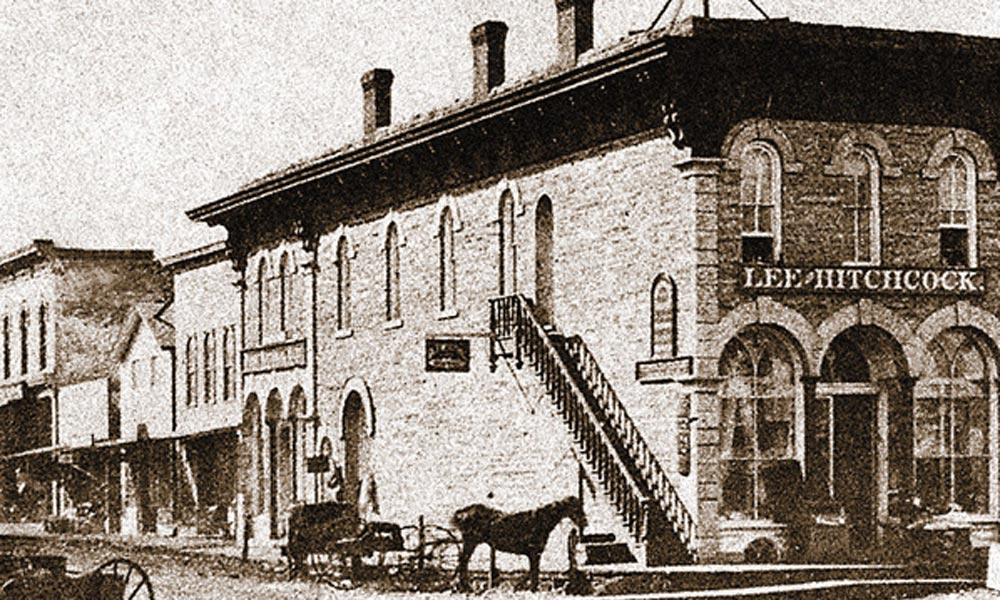
The James-Younger gang’s incredible streak of good luck ran out in Northfield, Minnesota, on September 7th, 1876 when the eight-member gang rode into town to be met by a different kind of foe. These hard-working citizens, many were ex-Union soldiers and were familiar with the James and Younger brothers.
On the morning of September 7th, around 11 A.M. five men wearing white linen dusters rode into Northfield and had lunch at a local cafe. Dressed in dusters might lead one to think this would have aroused suspicion, however it was common for traveling men to protect their clothing from the elements. The magnificent horses they were riding probably did draw attention to them for no more reason than the locals weren’t used to seeing such fine animals.
The boys discussed local politics, ate their meals and left. Then, just before 2 P.M. three men, Frank James, Charlie Pitts and Bob Younger crossed the river bridge to the west and rode up the town’s main street. They hitched their horses in front of the bank, walked up to the corner, sat down on some dry goods boxes and visited with locals for a few minutes. Moments later Cole Younger and Clell Miller rode in from the bridge. At 2 P.M. Frank, Charlie, and Bob then casually walked into the bank.
Clell Miller and Cole Younger stopped in front of the bank and dismounted. Cole pretended to adjust his cinch while Miller stationed himself by the bank door.
Meanwhile, Jesse, Bill (Chadwell) Stiles and Jim Younger were posted at the bridge to cover the getaway.
Suddenly, Frank, Bob, and Charlie leaped over the center counter, surprising clerks Frank Wilcox, Alonzo Bunker, and assistant cashier Joe Heywood. They demanded the vault be opened but Heywood insisted the inner door had a time lock and could only be opened at a certain time. Ironically, the inner door was closed but the time lock wasn’t set. Had Pitts walked up to it and pulled down on the lever it would have opened.
It was later said some of the boys had consumed a considerable amount of whiskey before riding into town. Bank teller Alonzo Bunker would later say he smelled “the stink of liquor” on them. If that was the case it might have impaired their thinking. However, none of the James-Younger brothers were known to be heavy drinkers. The military discipline demanded by Frank, Jesse and Cole normally wouldn’t have tolerated drinking before a robbery. Still, many years later, Cole claimed nearly a full jug of whiskey had been consumed earlier by some members of the gang. Perhaps they didn’t expect any trouble from a bunch of sodbusting farmers.
Descendants of the three bank tellers Joe Heywood, Frank Wilcox and Alonzo Bunker say the three robbers in the bank Frank James, Bob Younger and Charlie Pitts had been drinking. The tellers smelled the liquor on the breath of the robbers as well as their clumsy movements.
All the boys had to do was open the safe door and get the $12,000 stashed inside. Instead the robbers were fumbling with a change container that contained less than thirty dollars.
Shopkeeper J. S. Allen curiously walked up and tried to look in the window of the bank. Miller should have opened the door and politely escorted Allen inside to join the other hostage’s. Instead he pulled his pistol and tried to collar the man. Allen broke away and ran down the sidewalk shouting, “Get your guns boys, they’re robbing the bank.”
He ran back to his hardware store and started handing out guns, rifles and ammunition. The townsmen opened fire. All hell broke loose. Cole shouted to boys inside the bank, “Come on out of the bank, for God’s sake, they’re shooting us all to pieces.”
Henry Wheeler, a twenty-year-old pre-med student grabbed a single-shot .52 caliber Smith carbine and fired, from the third story window of the Dampier Hotel across the street, killing Clell Miller.
Anselm Manning at first thought the commotion was a promotional stunt by a theater company in town for a performance. Realizing it was for real, he picked up a single-shot Remington from his hardware store and shot Bob Younger’s horse at the hitching rail in front of the bank. His next round hit Cole in the hip. Then he drew a bead on Bill Stiles and shot him in the heart from about 70 yards.
The street had become a veritable war zone. At least two feisty citizens started throwing rocks point blank at the outlaws, while others fired shotguns loaded with birdshot.
Bob charged out of the bank and found his horse had been killed in the furious gunfire. He ran down the sidewalk looking for another mount when he exchanged gunfire with Manning. Both men missed, as Bob ducked under a staircase. Both men fired again and missed. Henry Wheeler fired again from the third story window shattering Bob’s elbow. Bob quickly shifted his pistol to his left hand and kept firing.
Cole had one of his bridle reins shot away so he reached down with his knife and cut the other off at the bit. Using his knees, Indian style, he rode in, wheeled around. As he turned his horse for Bob to climb up, a bullet struck Cole in the shoulder. Another shot off his hat. He pulled his left foot out of the stirrup so Bob could stick his left foot into the empty stirrup as Cole pulled him up behind. With Charlie Pitts providing cover fire, Cole and Bob rode off to join the others. Jim Younger took a bullet in the shoulder.
Sometime during the action in the street, Frank and Jesse were peppered with buckshot. It was later claimed that Jesse received a thigh wound. Another version said that it was Frank and Jesse who were riding double and a bullet passed through both their legs.
Many believe it was Jesse, Frank and Bob who entered the bank while Stiles, Jim and Pitts provided cover at the bridge. It makes sense; why would Jesse, the lead man in the operation provide back up? More likely, Jesse would have wanted to be right there on the front line. Most likely no one will ever be able say for certain just where Jesse was during the robbery.
Midst the sound of barking dogs, church bells ringing, shouting and gunshots, the gang rode hard out of town.
America’s most famous band of outlaws had just been bested by a bunch of citizens who wanted to hold on to their hard-earned cash.
Frank and Jesse were the only ones who managed to get away. Charlie Pitts would be shot and killed at Hanska Slough two weeks later when a posse surrounded him and the three younger brothers. The Youngers were given long prison sentences. The glory days of the ex-Confederate guerillas were over. Frank and Jesse would recruit new members but none were the caliber of the old gang and on April 3rd, 1882 Jesse was shot in the back by one of the new recruits, Bob Ford, who did it for the reward money.
On October 5th, 1882 Frank James publicly surrendered his guns to Missouri Governor Thomas Crittenden. He was held in the jail in Independence for six months where he was treated more as an honored guest than a prisoner. He was tried for murder and the jury took less than four hours to reach a verdict of not guilty to the applause and cheering of the gathered crowd.


